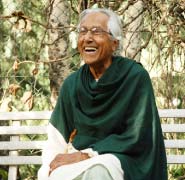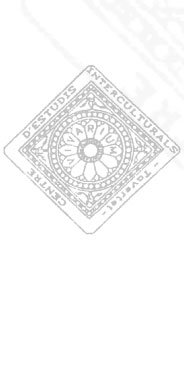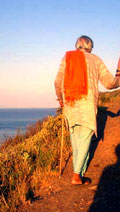



VITAL AND INTELLECTUAL JOURNEYS
7. Several Panikkars or a continuity within diversity?
We cannot identify with our ideas. Ideas are important, but their importance is relative. If one is unable to overcome the dichotomy between Being and Thinking, between what one is and what one thinks, he becomes a slave of his thinking and eventually loses the Christian sense of existence. (La nova innocència)
It has sometimes been noted that there are “several Panikkar”, particularly two: a first Panikkar, conservative, Catholic and Neothomist, and a second Panikkar that experiences the confluence of Christianity, Hinduism, Buddhism and secularity and brings forth a particularly valuable and original philosophy and theology .
It is true that there is an evolution in Panikkar, from a traditionally Catholic and Neothomist position to the very broad perspective that takes him into interreligious and intrareligious dialogue; this second Panikkar is the most interesting and most prolific. But we cannot separate the young Panikkar and the mature Panikkar. His vital and intellectual journey can be regarded as “a unique existence, kaleidoscopic and progressively accelerating”, as Dr. Miquel Siguan put it.
In spite of the deep transformations Panikkar has undergone, shaping the evolution of his thinking, I believe there is a continuity or a leitmotiv in it that can already be detected in his early writings: aiming to embrace everything, to take responsibility for Man and to explore everything to its roots, striving to experience fullness in a constant search for harmony. Panikkar himself insists in this continuity in his thinking: “My great aspiration was and is to embrace, or rather to become (to live) reality in all its fullness” (A Dwelling Place for Wisdom).
Key Panikkarian concepts like ontonomy and Christophany are already clear cut in the 50s: “Everything that I have written… can only be understood in relation to a fundamental insight of Being as a Christophany” (“My testament”, Cometas, 1954). Panikkar himself declared in an interview: “I haven’t experienced a road to Damascus, I haven’t fallen from the horse… Life is lived… Life has been given to us… We are objectifying so much that we easily feel like heroes or feel in need of confession… To put it more philosophically: the great myth of the West is History… I don’t write my history, I live it” (Éxodo, 65. 2002).
In fact, if we compare the early writings by Panikkar with later ones there is a marked evolution within this search for synthesis, harmony and fullness. This is due to a common human experience: to live is a dynamic process. If this dynamic process is denied or stalled, perhaps because we think we have reached absolute truth, there is a risk of falling into an intolerant fundamentalism.
*1. An Outstanding Man. Raimon Panikkar’s Fourfold Identity
*3. India. Christian-Hindu-Buddhist symbiosis. Meeting Monchanin and Le Saux (1955-1966)
*4. University teaching in California (1966-1987)
*5. His return to his Catalan roots to complete his vital cycle
